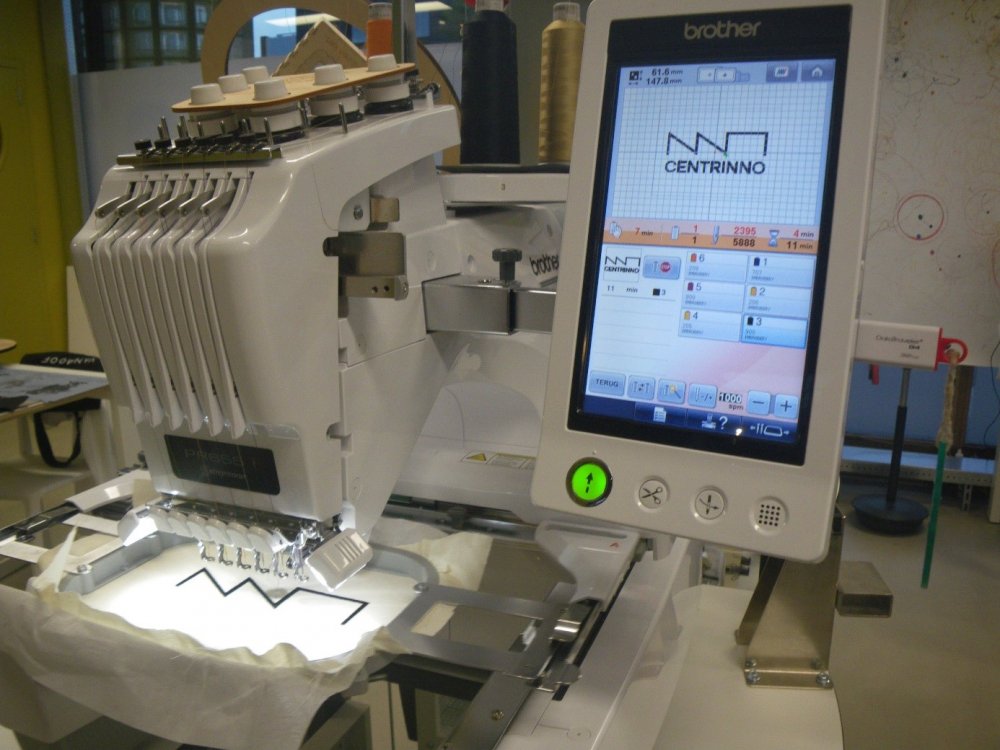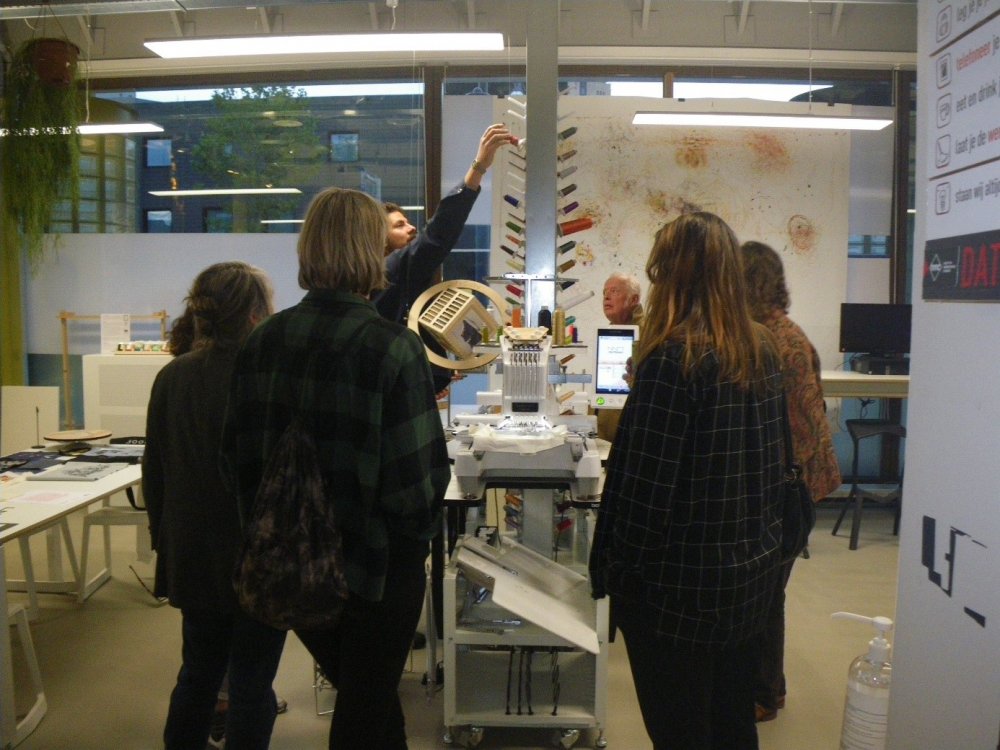14 september 2023
Spotlight: How to participate in Horizon Europe as a vocational education institution
Stel uw vraag
Meer informatie nodig? Stel uw vraag aan één van onze medewerkers
14 september 2023
Meer informatie nodig? Stel uw vraag aan één van onze medewerkers
Only a handful of Dutch vocational education institutions have ever participated in the prestigious European research program Horizon Europe. The Wood & Furniture College is one of them and is now a participant through the CENTRINNO project. Together with partners from Amsterdam and other European cities, they are working on regenerating historical industrial sites into creative production and manufacturing centers. How is it to participate as a vocational education institution in a research project, and what should you consider if you also want to participate in Horizon Europe? Neth-ER spoke with project leader Jacomijn de Vries and location director Stephan Welie about their experiences.

|
Project |
CENTRINNO (New CENTRalities in INdustrial areas as engines for inNOvation and urban transformation) |
|
Programme |
Horizon 2020 (Societal Challenges) |
|
Budget |
€ 8.261.142, of which € 100.625 for the Wood & Furniture College |
|
Coordinator |
Comune di Milano, Italy |
|
Partners |
34 uit 9 landen |
|
Participants NL |
Hout-en Meublieringscollege, Waag Futurelab, Pakhuis de Zwijger, Metabolic Institute, Amsterdamse Hogeschool voor de Kunsten |
|
Duration |
2020-2024 |
Over the past decades, the industry has progressively disappeared from Europe and its cities. Pressured by globalization and the transition to a service-based economy, factory workers vanished along with the appreciation for their jobs, and urban industrial sites slowly deteriorated. In the Horizon 2020 project CENTRINNO, nine European pilot cities are now attempting to reverse this trend. The project aims to breathe new life into historical industrial sites by transforming them into creative production and manufacturing hubs that design and produce in a circularly responsible manner. The project partners hope that these creative hubs will transform urban industrial areas, thereby giving a boost to a green urban economy. CENTRINNO aligns well with the new European industrial policy, which, following supply chain issues during the COVID-19 pandemic, focuses on green and digital reindustrialization of Europe.

One of the high-quality machines offered by HMC to makers & alumni in North-Amsterdam
In Amsterdam, there are also historical industrial locations, such as Buiksloterham and the NDSM wharf in Amsterdam-Noord, near the Amsterdam location of the vocational institution Wood & Furniture College (HMC). "The predecessor of the current project leader, Jacomijn de Vries, heard about plans to initiate a Horizon project focused on craftsmanship and industrial heritage through her European network," says Stephan Welie, location director of HMC Amsterdam. In response, HMC, Pakhuis de Zwijger (a platform for creativity and social innovation), and Waag (a future lab for technology and society) decided to participate in CENTRINNO to explore how the manufacturing industry can play a significant role in Amsterdam's sustainable transition. "Due to housing and economic pressures, the availability and visibility of maker spaces in the city are under threat," Welie explains. "If maker spaces in the city disappear, residents are forced to travel outside the city for clothing and furniture repairs and furniture purchases. The farther they have to travel, the more likely consumers are to opt for less sustainable options, such as discarding furniture and buying cheaper and less sustainable new ones online."
In In the Amsterdam pilot, the partners aim to halt the displacement of artisans from the city. They will work together to provide infrastructure and facilities for manufacturing companies in an innovative way, build a strong network of artisans and production companies, and experiment with circular production methods. Additionally, the pilot should lead to a revaluation of craftsmanship, including increasing its visibility in the neighborhood and exploring new accessible methods for recruiting and training (young) talent. In this regard, the HMC, as a vocational education provider, naturally plays an essential role.
"When craftsmanship in the city is under pressure, as an educational institution, you also have a role to play in finding solutions," believes Stephan Welie. "In response to CENTRINNO, HMC opens its workshops and innovative labs to alumni students and makers at cost price on evenings and days when students are not using the facilities. For a starting artisans, access to HMC's high-quality machines can make the difference. This way, you encourage entrepreneurship in the city." Additionally, as part of the project, HMC, together with Pakhuis de Zwijger and Waag, explored new training opportunities for creative craftsmanship.

Explanation on the operation of an embroidery machine during CENTRINNO open evening for makers & alumni
"In essence, CENTRINNO is about establishing what are known as Fab City Hubs. These are learning communities that aim to transform production and consumption in cities to become less dependent on global supply chains," says project leader Jacomijn de Vries. "Thanks to this project, HMC is participating in the redevelopment of the NDSM wharf." After a pitch by De Vries and her project colleagues, the HMC board decided to collaborate with the Kinetisch Noord Foundation to redesign a container and a mezzanine at the NDSM wharf, making the school more visible in the neighborhood. This new satellite location of the school can be used to seek new partners, organize entrepreneurship lessons for students in collaboration with business leaders at the NDSM wharf, and host events related to circularity with makers and new target groups from the area. It also serves as a physical place to introduce high school students from Amsterdam Noord to the technical manufacturing programs offered by HMC. Young people in Amsterdam Noord are not sufficiently aware of these opportunities and the excellent prospects for future employment they provide."
The CENTRINNO project will be completed in January. However, Jacomijn and the HMC board are taking steps to make the project's impact sustainable. The mezzanine and container at the NDSM wharf are an example of this. In addition, the school established an innovation team in response to the project to keep the developments from the project together. This way, more and more people within the school are taking responsibility. The most significant structural impact is the establishment of Maakschap Amsterdam, in collaboration with Waag. This is an alliance where makers can join and connect with each other to share knowledge and collectively advocate for better policies in the city. During the founding of the alliance at Pakhuis de Zwijger, attending politicians were presented with a manifesto advocating for a forward-looking policy for makers in the city. Lastly, HMC is exploring how to shape a 'practoraat' focused on circular entrepreneurship to connect research and practice.
Both the Amsterdam partners and the international partners also learned a lot from HMC as a vocational education institution. "As a vocational school, we are doers," says Stephan Welie. "That's our strength. From that 'action mode,' we can quickly transition from conceptualization to implementation. This makes a project like CENTRINNO tangible and visible. Of course, it is crucial to collaborate with the researchers from Waag to ensure the right critical questions are asked. This creates an upward spiral for all parties involved. "The project offered the partners we worked with a valuable glimpse into the world of education, which is not always readily visible to the outside world," says De Vries. "Partners learned how to practically engage in educational programs and training and how students can be a valuable addition. This fosters connections between education and the immediate community."
Jacomijn would definitely recommend other vocational education institutions to participate in a project through Horizon Europe. "You can use a European project like this to fulfill ambitions that your school has set in its multi-year plan. The network and resources provide the space and time to realize these goals. Additionally, it helps if you have the support of the school's leadership, such as the board or a location director, who are willing to initiate a project and ensure its sustainability. It is also important to make such an EU project tangible and visible within the school, for instance, by setting up an exhibition of makers in Amsterdam-North within the building. It should not be confined to a few individuals but gain recognition within the school. On the other hand, an EU project also helps you as an institution to step outside the school walls and become visible to its surroundings. We are now being approached more frequently as an institution to participate in other projects and events."

Stephan Welie, Director of HMC Amsterdam Campus, opens CENTRINNO Exhibition on Makers in North-Amsterdam
Despite the positive outcomes, Jacomijn also provides a few profit warnings. "Vocational education institutions should be aware that Horizon projects are extensive endeavors. There is a significant amount of time involved in reporting on the deliverables. Additionally, the subsidy does not cover all the expenses you incur. For HMC, it was beneficial to collaborate with partners who already have experience with larger grant projects." Stephan Welie adds that a large project can have an impact on your daily organization. "It leads to improvisation, administrative work, class cancellations, and staffing issues. It causes temporary disruption in your organization. On the other hand, it triggers a lot of new thinking in the minds of participants and stakeholders, which generates a tremendous amount of new energy. So," Welie concludes, "be open to the unknown and let yourself be surprised by what it can yield."